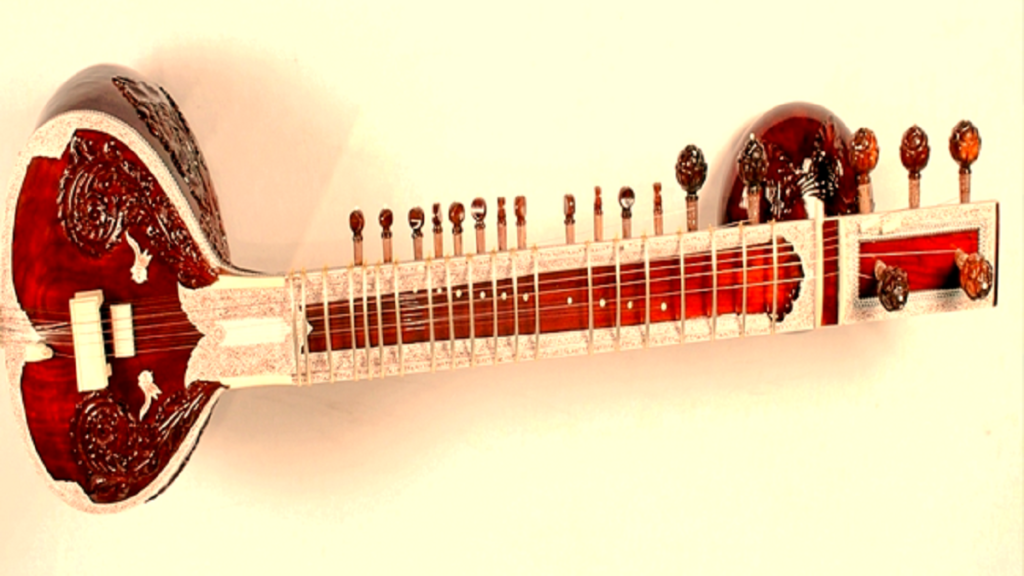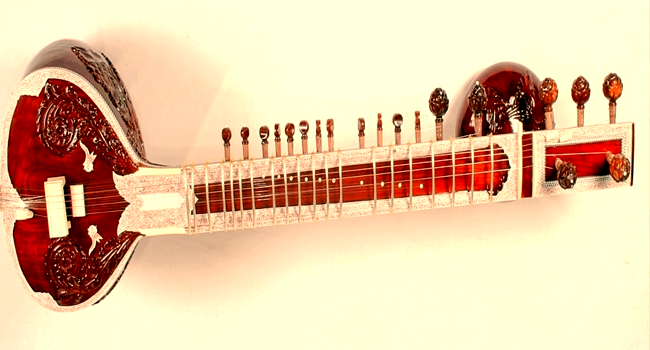Introduction
In the vibrant tapestry of Indian tune, the art of creating musical instruments holds a unique region. Behind the mesmerizing melodies which have echoed for centuries lie the skilled palms of artisans who meticulously create devices that aren’t merely objects but conduits of inventive expression. This exploration delves into the profound global of crafting Indian musical contraptions, exploring the traditions, strategies, and craftsmanship that contribute to the soulful resonance of those sonic treasures.
The Cultural Significance of Indian Musical Instruments

- Instruments as Cultural Artifacts
Indian musical instruments are not just geared for developing songs; they are embodiments of cultural history. Crafted with precision and imbued with symbolic significance, every tool incorporates the essence of a specific area, culture, or classical fashion.
- The Spiritual Connection
Many Indian contraptions are deeply intertwined with spirituality and spiritual rituals. The making of these gadgets entails a religious adventure in which craftsmanship becomes a shape of devotion. The Veena, for example, is revered not only for its melodic competencies but also as a symbol of Saraswati, the goddess of expertise and humanities.
The Craftsmanship Behind North Indian Musical Instruments
- Sitar: Stringed Elegance
The Sitar, with its resonant strings and iconic gourd frame, is a masterpiece of expertise. Artisans meticulously choose the timber, frequently opting for pro gourds, and rent complex carving and inlay paintings to create the unique styles at the tool’s neck. The introduction of the ‘jawar,’ a sensitive bridge that impacts the Sitar’s tonal best, calls for a skilled hand and acute acoustics knowledge.
- Tabla: The Percussive Art
Crafting the Tabla entails a symphony of talents. The body, crafted from clay or metallic, undergoes meticulous shaping. The heads, generally crafted from goat or buffalo hide, are carefully stretched and tuned to acquire the favoured pitch. The very last tuning, referred to as “shahi,” entails the software of a paste that first-class-tunes the drum’s tonal fine.
- Shehnai: Melodic Precision
The Shehnai, a double-reeded wind tool, needs particular craftsmanship. Artisans intricately carve the frame from timber or metal, paying close interest to the tapering design. The double reeds, crafted from bamboo, are carefully adjusted to achieve the tool’s exceptional timbre. Crafting the complicated finger holes and including metallic elaborations complete the manner.
Sarod: Crafting Resonance
The Sarod’s craftsmanship involves a sensitive stability of aesthetics and functionality. Artisans select substances which include teak, mahogany, or rosewood for the frame, ensuring both durability and tonal richness. The method of carving the stomach and attaching the metal fingerboard requires a keen understanding of the tool’s acoustic residences.
Crafting the Melody: South Indian Musical Instruments
- Veena: The Symbol of Saraswati
The making of the Veena is an intricate art. The choice of wood, often jackfruit or red cedar, influences the instrument’s tonal style. The resonator, known as the “kudam,” is meticulously carved to acquire the appropriate balance. The frets, made from brass or silver, are intricately positioned to permit precise pitch control.
- Mridangam: Shaping Rhythmic Beats
Crafting the Mridangam entails shaping the body from an unmarried block of timber, normally jackfruit or redwood. The problematic system includes:
- Hollowing out the 2-headed drum.
- Attached are the leather-based heads.
- Tuning them to attain the wonderful bass and treble tones.
The final utility of a mixture called “sannam” first-class-tunes the drum’s resonance.
- Ghatam: The Art of Clay
The Ghatam, a clay pot percussion tool, calls for a specialized ability set. Artisans carefully mildew the clay, typically from riverbanks, into the preferred shape, ensuring uniform thickness for steady sound. The final firing system determines the instrument’s sturdiness and tonal characteristics.
- Flute: Crafting Melodic Grace
The crafting of the Flute involves choosing bamboo that is of the right age and nice. Artisans cautiously carve the body, including the embouchure hollow and finger holes, to gain the preferred pitch and pleasant tone. The technique requires precision to ensure the Flute’s playability and resonance.
Crafting Harmonies in East Indian Musical Instruments
- Santoor: Strings of Serenity
Crafting the Santoor entails a meticulous process. Artisans pick out hardwood for the frame and arrange a couple of strings over bridges, developing a complicated sample. The first-class tuning of every string, often executed with a mixture of timber wedges and steel pins, calls for an eager feel of tonal aesthetics.
- Bihu: Weaving Folk Traditions
The crafting of the Bihu, a traditional folks’ fiddle, includes selecting resonant wood for the body and carving intricate designs. Artisans shape the resonator and fix the strings, considering the tool’s ergonomic layout for ease of playability in the course of lively Bihu dance performances.
- Khol: The Rhythmic Dialogue
The Khol, a -headed drum, undergoes a meticulous crafting process. Artisans form the frame from clay or wood and fasten the two drumheads. The tensioning of the heads, referred to as “manga,” requires particular adjustments to achieve the preferred tonal range. The final tuning involves applying a mixture referred to as “good” to fine-tune the drum’s resonance.
- Bamboo Flute: Regional Melodies
Crafting the Bamboo Flute entails selecting bamboo of the correct diameter and age. Artisans carve the body, create the embouchure hole, and meticulously drill finger holes. The final adjustments to the inner bore and the tuning of the Flute make contributions to its distinct local melodies.
Crafting Harmonies in West Indian Musical Instruments
- Jal Tarang: Water-Filled Melodies
The crafting of the Jal Tarang entails arranging water-stuffed glasses in a cautiously calibrated setup. Artisans pick out glasses of different sizes and fill them with various amounts of water to gain specific pitches. The sensitive artwork lies in arranging the glasses in a manner that permits fluid melodic transitions.
- Dhol: Shaping Celebratory Beats
The Dhol, a massive barrel-formed drum, undergoes an in-depth crafting method. Artisans shaped the body from pro wood and fixed the two heads, typically made from goat or buffalo disguise. The tensioning of the heads and the software of a paste known as “shilajit” make contributions to the Dhol’s exceptional bass and treble tones.
- Harmonium: Hand-Pumped Harmony
The Harmonium, added by European missionaries, is crafted with precision. Artisans pick out excellent timber for the frame and thoroughly gather the reeds and bellows. The final tuning involves adjusting the reeds and ensuring airtightness, allowing for expressive hand-pumped harmonies.
- Trumpet: Brass Resonance
The crafting of the Trumpet involves shaping brass into a spiral form, developing the instrument’s different look. Artisans carefully mould the mouthpiece, flare the bell, and regulate the valves for ultimate playability. The final polishing enhances not only the instrument’s visual enchantment but also its resonance.
Indian Musical Instruments: Tradition Meets Modernity: Adapting Craftsmanship
- Fusion of Traditional and Modern Materials
In current instances, artisans often experiment with present-day substances, even preserving conventional techniques. This fusion allows for innovations in device making, enhancing durability and playability without compromising the contraptions’ inherent tonal traits.
- Challenges within the Modern Era
Craftsmanship faces challenges in present-day technology, including the supply of fine uncooked materials, changing market needs, and the need for sustainable practices. Overcoming these demanding situations calls for delicate stability in retaining the way of life and adapting to the evolving needs of musicians and lovers.
- Revival of Endangered Instruments
Some traditional instruments face the threat of fading into obscurity. Artisans and fanatics are tasked with reviving and preserving those endangered instruments. This entails not only recreating lost contraptions but also documenting and coaching the craftsmanship to future generations.
Indian Musical Instruments Preserving the Craft: Education and Initiatives
- Apprenticeships and Guru-Shishya Parampara
Craftsmanship in device-making often follows the age-antique culture of apprenticeships and the guru-shishya parampara (teacher-disciple subculture). The switch of capabilities and understanding from grasp artisans to apprentices guarantees the continuity of craftsmanship throughout generations.
- Educational Programs and Workshops
Educational packages and workshops play a critical position in maintaining the craft. Institutions, both traditional and contemporary, offer courses in instrument making, protecting the technical components and ancient importance. These programs contribute to the introduction of a new era of skilled artisans.
- Collaborations with Musicians and Institutions
Artisans frequently collaborate with musicians and institutions to understand evolving musical wishes. Such collaborations not only contribute to the refinement of existing units but also cause the advent of completely new units, pushing the boundaries of traditional craftsmanship.
Indian Musical Instruments Crafting the Future: Innovation and Sustainability
- Technological Innovations in Craftsmanship
Technological improvements are making their way into craftsmanship, aiding in precision and efficiency. From pc-aided design (CAD) for tool modelling to superior materials for improved sturdiness, the era is contributing to the evolution of instrument making even as preserving traditional aesthetics.
- Sustainable Practices in Instrument Making
Artisans are adopting sustainable practices in tool-making more and more. This consists of responsibly sourcing raw substances, employing eco-friendly production methods, and growing units that stand to take a look at time. Sustainability guarantees that future generations can comprehend the artistry and craftsmanship of Indian musical units.
Conclusion: Indian Musical Instruments
The artwork of creating Indian musical instruments is a profound adventure that transcends craftsmanship and will become a cultural and non-secular expression. From the resonant strings of the Sitar to the elaborate carvings on the Shehnai, each instrument tells a story of lifestyle, willpower, and the symbiotic courting between the craftsman and the artwork.
As we have a good time, the variety of Indian songs allows us to now not overlook the professional fingers that shape the devices, infusing them with lifestyles. The destiny of tool-making lies within the arms of artisans, musicians, and fanatics who recognize the importance of preserving a way of life at the same time as embracing innovation. Through this delicate dance between subculture and modernity, the art of creating Indian musical contraptions continues to adapt, making sure that the symphony of sounds persists for generations to come.
FAQs: Indian
1.How are traditional Indian musical units made?
Traditional Indian musical instruments are crafted through a meticulous system involving the choice of satisfactory substances, complicated shaping, carving, and tuning. Artisans frequently comply with age-antique strategies passed via generations.
2.What position does spirituality play within the crafting of Indian devices?
Spirituality performs a widespread function in the crafting of Indian gadgets, especially the ones associated with religious rituals. Craftsmanship will become a shape of devotion, and devices like the Veena, taken into consideration sacred, are crafted with a deep, non-secular connection.
3.How are cutting-edge substances included in conventional device-making?
Modern substances are frequently integrated into conventional tool-making to decorate sturdiness and playability. Artisans experiment with materials like artificial fibres and alloys while maintaining conventional strategies to strike a balance between tradition and innovation.
4.What challenges do artisans face in the modern generation?
Artisans face demanding situations consisting of the provision of fine raw materials, converting marketplace demands, and the need for sustainable practices. Balancing subculture with the evolving needs of musicians and fans poses a delicate undertaking.
5.How can individuals make contributions to maintaining the craft of tool-making?
Individuals can contribute by assisting conventional artisans, attending workshops, and promoting sustainable practices. Appreciating and know-how of the artwork of tool making enables creation cognizance, making sure of the continuity of this wealthy cultural historical past.
